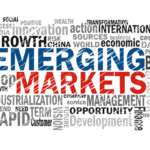Overview of Global Equities Investment
Global Equities are composed of securities from both the United States and international stock markets. Investing in Global Equities as an investment strategy offers risk management benefits and return potential. A Global Equities portfolio differs from an international equities portfolio that only holds stocks from companies outside of the U.S.. The Morgan Stanley Capital All Country World Index tracks 85% of the world’s listed companies. As of the end of January 2024, the MSCI All Country World Index aggregated value is almost $68 trillion. The largest country weightings of the index are:
| Country | Index Country Weighting | Market Capitalization Value in US $ (Trillion) |
|---|---|---|
| United States | 63.2% | $42.7 |
| Japan | 5.6% | $3.8 |
| United Kingdom | 3.5% | $2.4 |
| France | 2.9% | $1.9 |
| Canada | 2.8% | $1.9 |
| Other Countries | 22.0% | $14.9 |
As shown in the table above, the United States market cap dwarfs the remaining world-wide stock markets. United States listed companies comprise the top 10 constituents of the MSCI ACWI Index. Because so much market capitalization is concentrated in the U.S., Hemispheres investment strategy tends to have at least 40% of its global equity portfolios in U.S. incorporated companies. Hemispheres investment strategy assigns capital to countries that promise the best risk management and return advantage.
Hemispheres has a well-defined, repeatable process to allocate capital to worldwide countries, regions, sectors, and individual companies. The strategy has a proven track record developed over 35 years of experience.
What is Portfolio Diversification?
Portfolio Diversification is a risk management strategy that attempts to reduce overall portfolio risk. Diversification limits exposure to any single asset within a portfolio by allocating capital to a mix of various investments. “Don’t put all of your eggs in one basket” is an age-old idea that still holds true. Individuals can diversify their portfolios by investing in various asset classes like stocks, bonds, real estate or other alternative investment vehicles. Alternate investments include items such as exchange traded funds, cryptocurrency, commodities, cash, and cash equivalents, etc. A single asset class within a portfolio can be diversified. Through the addition of securities with low correlation coefficients, positive performance of some investments offsets the negative performance of others. Lowering portfolio volatility provides a more consistent level of portfolio performance for investors and is a proven risk management method.
This benefit of low correlation in asset classes was recently demonstrated. Because of higher interest rates, which provided investors with higher annual income, Fixed Income security (bonds) performed well during 2023. In contrast to bond performance, many stocks in sectors such as regional banks underperformed while rates were rising.
Diversification through Global Equities
Countries around the world have different political, regulatory and monetary policies that affect shareholder returns. For example, the countries of Greece and Argentina held Presidential elections last year where pro-market candidates won the respective elections. The political environment influences both a country’s economic and equity market outlook. According to Bloomberg, the favorable political outcome resulted in the Greek and Argentine indices returning roughly 48% and 67%, respectively, in U.S. dollars for fiscal year 2023. These returns compare favorably to the S&P 500 and other US only benchmark returns. Furthermore, Greece’s sovereign debt rating improved, benefiting equity and fixed income investors.
Another example is China. Following the slow COVID economic recovery, the government adopted a monetary policy of quantitative easing. China’s policy compares to quantitative tightening in the US and other Western economies. While this metric alone ignores geopolitical risk, in general, quantitative easing is bullish for a country’s stock market. There are over 45 countries with investable stock markets. Not all countries have the same monetary and fiscal policies and those policies matter to foreign investors. Globally, Hemispheres can invest in over 10,000 market leading companies with market capitalization over $1 billion. These opportunities compare to 2,000+ in the US alone providing higher diversification potential and enhanced returns.
Role of Global Equities in Investment
Long-Term Investment Potential
Please note the returns in the table below. Hemispheres’ returns on almost all time periods were stronger than the Global Value Benchmark and the S&P 500. The correlations between Hemispheres Investment Management (HIM) Global Equities and the S&P 500 have ranged between 0.65 and 0.71. During most periods, HIM Global Equities outperformed the S&P 500 while garnering diversification benefits.
| Start Date | End Date | HIM Global Equities |
MSCI Global Value Index |
S&P 500 | |
|---|---|---|---|---|---|
| 1 Year | 12/31/2022 | 12/31/2023 | 37.76% | 13.69% | 26.26% |
| 3 Years | 12/31/2020 | 12/31/2023 | 11.73% | 9.56% | 10.00% |
| 5 Years | 12/31/2018 | 12/31/2023 | 16.60% | 10.23% | 15.68% |
| 8 Years | 12/31/2015 | 12/31/2023 | 15.22% | 8.46% | 13.22% |
| Since Inception | 1/31/2015 | 12/31/2023 | 11.29% | 7.55% | 11.80% |

Correlation
The table below provides correlation statistics from 1988 to 2023
| S&P 500 | MSCI ACWI Benchmark |
MSCI EM Benchmark |
Investment Grade Bonds |
|
|---|---|---|---|---|
| S&P 500 | 1.00 | 0.90 | 0.60 | 0.05 |
| MSCI ACWI | 0.90 | 1.00 | 0.76 | 0.06 |
| MSCI EM | 0.60 | 0.76 | 1.00 | 0.16 |
| Investment Grade Bonds | 0.05 | 0.06 | 0.16 | 1.00 |
Statistically, a correlation factor of 0.7 or less means that adding a different asset class or an individual stock to a portfolio offers diversification benefit. The MSCI Emerging Market index correlation to United States markets is 0.6 and highlights that the relative movements between the S&P 500 and MSCI EM provides investors with opportunities to buy or sell into international stock markets in which prices move in a differing direction from the U.S. markets. In other words, adding Emerging Market assets to the S&P improves portfolio diversification. Investment Grade Bonds provide even greater diversification benefits, highlighting the value of investing in different asset classes.
In February of 2023, the Vietnam stock market declined due to worries about inflation and supply chain pressures linked to the Ukraine-Russia war. This represented a strong buying opportunity for international/global investors. The Vietnam stock market is in one of the fastest growing economies in the world currently priced at a 35% to 40% discount, on a price-earnings basis, to the S&P 500. Following the nadir in February 2023, the Ho Chi Mihn Stock Index rallied about 22% versus 12% for the S&P 500 over the following six months.
Fundamentals of Risk
All investing assumes that the investor is taking some risk to achieve their investment goals. There are two distinct categories of risk when investing, they are: Systematic Risk and Unsystematic Risk.
Systemic Risk
Systemic Risk is risk that affects the entire market. Examples of these risks or external factors include recession, inflation, geopolitical tension, natural disaster or change in interest rates. In other words, these risks are beyond the control of an individual company and impact the overall market. The only way to eliminate systemic risk is to stay out of the market entirely. This strategy however, will guarantee that you fall short of your financial goals.
Hemispheres investment strategies can certainly help the investor manage this risk through asset allocation between asset classes. Increasing bond holdings relative to stock allocation is one example of a risk management strategy. Strategies in fixed income investing can include lengthening or shortening maturities or moving to higher credit quality. Within stock investing, managers can allocate advantageously. Strategies include changing market cap, increasing international weighting, sector rotation strategies.
Unsystematic Risk
Unsystematic risk is a company specific risk. The five major types of unsystematic risk include:
Business Risk
Business risk refers to a company’s ability to generate sufficient revenue to cover its operational expenses. An example of a business risk would include an automotive company that suffers a widespread labor strike that increases costs. If the company cannot pass higher costs through to its customers, profits are lost.
Financial Risk
Financial risk refers to the capital structure of a company. Company management’s responsibility is to optimize the amount of debt to equity they maintain to encourage growth and maintain normal business operations. Management must maintain adequate liquidity to meet financial obligations as well as to assure access to capital to fund ongoing and future operations.
Operational Risk
Operational Risk can result from unforeseen or negligent events and reflects failed systems and policies. A recent example of this would be the failure of SVB Financial Group. The bank was the preferred bank of many of the venture capital entities investing in technology startup firms. When the Federal Reserve raised interest rates to combat inflation, a mismatch between the maturities on their investment portfolio and their liabilities (deposits) resulted in inadequate liquidity. Large losses on bank investment portfolios resulted in a run on deposits and bank failure.
Strategic Risk
Strategic Risk can refer to life-cycle risk. Our society is changing. Products that were popular years ago may not be popular now and the industry may be declining. Management needs to develop a plan to evolve and to offer products and services that will be in demand. An example of this risk would include utility companies who were late participants in the cable industry in the 1990s. Mass adoption of this strategy among utility companies resulted in a glut of cable capacity. Over capacity resulted in falling prices and losses for the individual companies.
Legal and Regulatory Risk
Legal and Regulatory Risk involves a change in law or regulation that adversely impacts a business. An example of this risk would be an oil pipeline where the government revokes licenses for environmental reasons.
Unsystematic risk is diversifiable risk. Detailed analysis and investment management expertise overcomes unsystematic risk to the portfolio. The principals at Hemispheres Investment Management have 35 years of experience analyzing individual companies, sector fundamentals and trends. Hemispheres Investment Management’s principals have successfully navigated varied markets across many market cycles and several different shocks to the economy and markets.
Implementing Diversification and Risk Management
Holding size
Studies demonstrate that a portfolio of at least 25 to 30 stocks yields a cost-effective level of risk reduction. Hemispheres Investment Management utilizes the services of Charles Schwab as our custodian. Charles Schwab does not charge a commission on most securities purchased by Hemispheres Investment Management for its clients. Therefore, Hemispheres typically holds between 40 – 50 individual stocks in its Global Equities Investment Strategy. Because Hemispheres enjoys low transaction costs, additional securities improves portfolio diversification without sacrificing returns.
As an example of the benefits of diversification, if a company in the portfolio suffers a catastrophic loss and the stock price declines 50% in one year, the effect on the overall portfolio is minimal if the holding is only 1% of the portfolio.
Country Diversification
Studies have shown that investing internationally has significant benefits to a portfolio. During volatile time (as measured by standard deviation of individual securities), the returns between countries vary materially. By opportunistically investing Hemispheres enhances returns for investors. Hemispheres performs a thorough analysis of company financial fundamentals. Furthermore, Hemispheres assesses whether the investment environment is supportive of foreign investors and market liquidity.
Sector Diversification
In specific market conditions, various sectors will outperform, and others will underperform the market return. Hemispheres strength is in security selection. We look for fundamentally solid, undervalued securities in all sectors and industries. Sector weightings are based on perceived return opportunity among individual stocks while remaining aware of the benchmark sector weighting. To demonstrate our approach, the valuations of many technology companies were extremely expensive until the market declined in 2022. After many leading companies’ stocks declined in value, we recognized the opportunity and increased our position sizes strategically.
Industry leadership/competitive advantage
Hemispheres looks to invest in or higher quality companies that offer stable earnings, healthy balance sheets and cash flow. We assess competitive advantages based on superior products, management teams and cost efficiencies, etc. Industry leaders shareholder return generally outperform weaker stocks in favorable markets. Additionally, leading companies navigate downward cycling economies much better than weaker industry players, thereby mitigating risk.
Market Capitalization Size
Hemispheres implements a multi-cap investment strategy as long as the financial fundamentals at the individual firm supports capital allocation and fits risk management criteria.
Security Price
Stocks that trade under their intrinsic value reduces investor risk. During a market sell off, these stocks rate of decline is generally less than the market. In protracted periods of declining market, managers look for a safe haven. When portfolio managers rotate into undervalued entities, they drive the stock price higher, resulting in higher returns.
ETF investing
Hemispheres can add diversification to our investors’ portfolio through purchase of an index related Exchange Traded Fund (ETF). Hemispheres utilizes this approach in our Fixed Income strategy. A portion of client assets are invested in an ETF, typically the Bloomberg US Aggregate Bond fund. Hemispheres then augments the ETF returns by adding specific securities that offer attractive total and current yield return potential.
Regular Review and Portfolio Rebalancing
Hemispheres Investment Management is an active manager. The managers constantly evaluate and rebalance the price movements of the market in general, of the holdings in our strategies, and prospective securities that could provide return enhancement and risk reduction.
Conclusion
We recognize that individual and institutional investors alike may be new to investing in Global Equities. The concept of risk management through diversification within asset classes further adds uncertainty to individual investors. There are complexities and nuances associated with investing in various markets that require expert guidance. Investing in Global Markets can provide both returns and diversification benefits to our clients. Hemispheres Investment Management’s team of seasoned professionals have a 35-year track record of successful investment strategies. The Global Equities product is Hemispheres flagship product.
Please contact Hemispheres Investment Management for a free consultation. We provide guidance and strategies to assist you optimize your investment policy and help you achieve your investment goals. Book a meeting







